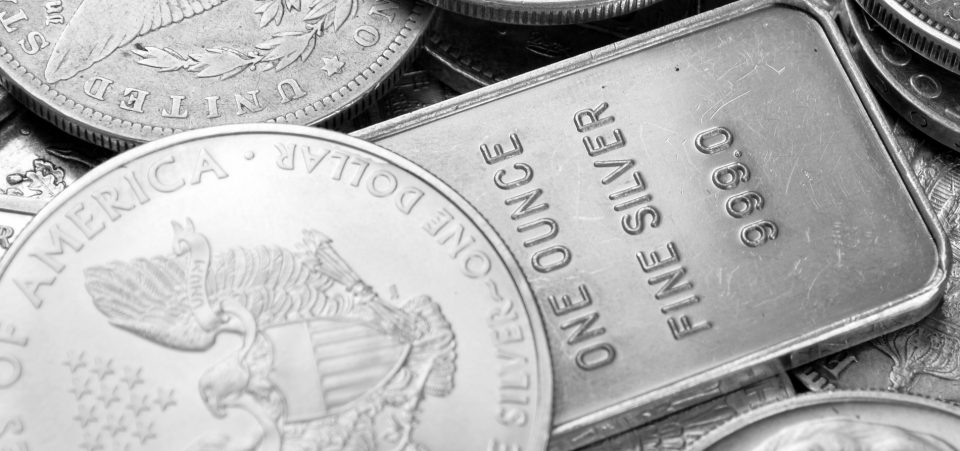A Violent Move Is Expected to Follow for Silver Prices
I have a hard time containing the excitement I feel when I look at the silver price chart. This may be contrary to what others feel about this commodity, because the price of silver has essentially come to a standstill.
When I say standstill, I really mean it. Volatility is non-existent at the moment and a number of technical indicators have completely flatlined, producing no signals whatsoever. At this point in time, the price of silver has no pulse.
I am by no means saying this commodity is dead; quite the contrary. I believe a storm is coming and that we are currently sitting in the calm of that storm.
My beliefs all center around the technical developments that are occurring with silver prices, so let’s begin with the weekly silver price chart in order to illustrate what I am referring to.
Chart courtesy of StockCharts.com
This silver price chart illustrates that the price of this commodity has been trading in a very narrow range in 2018. This range continues to contract, and volatility has dropped off completely. This lack of price action has caused a number of technical indications to flatline at the neutral point.
For instance, the 200-week moving average and the 50-week moving average are influential metrics that are used to create market signals. When these moving averages cross, they generate an indication suggesting that either a bull market or a bear market is in development.
In March 2017, these moving averages came together and, instead of crossing, they became one. This neither suggests nor refutes that a bull market or bear market is in development.
The relative strength indicator (RSI) currently resides at 50. RSI is an indicator that is used to measure whether a commodity is overbought or oversold. These conditions are measured by using an oscillator that fluctuates between zero and 100. A reading above 70 is overbought, while a reading below 30 is oversold.
As I mentioned, the RSI currently stands at 50, which is neither overbought nor oversold. It is completely neutral.
The moving average convergence/divergence (MACD) indicator is a simple yet effective trend-following momentum indicator that uses the crossing of a signal line in order to determine whether bullish or bearish momentum is influencing the price action.
Bullish momentum implies that a price is likely to appreciate, while bearish momentum implies that a price is likely to depreciate. A commodity cannot a make a sustained move in either direction unless the applicable level of momentum is supporting it.
The MACD indicator has been bound around the zero line, confirming what we already know, which is that the price of silver has not made a sustained move in either direction.
What makes this phenomenon really extraordinary is that it is happening on multiple time frames.
The following monthly silver price chart illustrates this phenomenon.
Chart courtesy of StockCharts.com
This silver chart, using a monthly scale, looks very similar to the chart using a weekly scale. The RSI currently resides at 50, while the MACD indicator is bound by the zero line. I have already established that these are both neutral signals.
The exception on this monthly sliver price chart has to do with the 50-month and 200-month moving averages. These moving averages are telling quite a compelling story.
These moving averages have become substantial levels of price support and price resistance. As time progresses, the range between these metrics continues to contract. This contraction of space causes pressure to build as the price of silver is being backed into a corner. One of these levels is going to give, and, when it does, a powerful move will follow.
Which way the silver price will break out is up for argument. Both camps have compelling reasons to support their stance, but I am leaning toward a bullish resolution.
From a technical perspective, the 50-month moving average is still above the 200-month moving average, which means that these moving averages are still in bullish alignment. This suggests that a bull market is still in development.
These moving averages first crossed in a bullish manner in December 2004, when silver was trading around $7.00 per ounce. The bullish camp is using this information to suggest that the correction in silver prices that began in 2011 has been within the context of a bullish trend that is still in development.
One thing I know for sure is that the current containment of the silver price cannot persist indefinitely. A resolution is coming, and it is going to be violent in nature. This is indeed the calm before the storm, but perhaps calling it a “storm” may be a bit of an understatement. We may be sitting in the eye of a hurricane.








